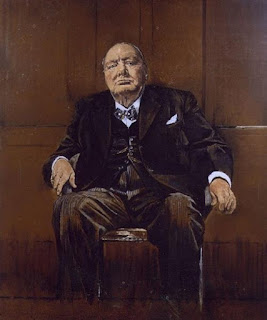The Game is Afoot, Churchill!

Anyone who knows a decent amount about Winston Churchill would admit that his was no ordinary personality. His recklessness in battle, fierce defiance, rare mastery of the English language, and witty repartee are just a few of his powerful traits. Despite his unusually potent character, however, I hope that all of my readers can join me in saying, emphatically, that Sir Winston Churchill was a real person. If you can, you will be smarter than 23% of British teens when it comes to Churchillian knowledge. Here's why: 23% percent of British teens surveyed in 2008 thought that Winston Churchill was a myth. Meanwhile, 58% believed that Sir Arthur Conan Doyle's fictional detective Sherlock Holmes had actually existed. A 1904 sketch of the (fictional?) detective Sherlock Holmes Although Doyle may have taken this statistic as a complement to his writing, Churchill would certainly have been insulted. It is interesting to reflect that Churchill could have actually rea...





